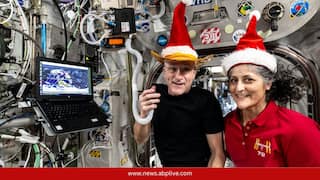Soon, strategies to up 'good' cholesterol

Washington D.C. [USA], Nov 14 (ANI): A recent study could bring about the strategies to increase the so-called "good" cholesterol that associates with protection from cardiovascular disease.
After decades of individual attempts to identify the structure of the main building block of HDL (high-density lipoproteins), a research team representing eight academic institutions across the U.S. and Australia has come to agreement on a predictive model.
"We are excited to finally have a robust picture of what this protein looks like," said corresponding author Sean Davidson.
Davidson and John Melchior organized a working group of leading lipid structural biologists to attack a fundamental issue in the field of fat metabolism. "All of us, including myself, have been chipping away at the edges of this problem for decades," says Davidson, adding that the protein simply doesn't respond to the typical methods used to model other protein structures.
Thus, the working group took a novel approach: they combined data from a variety of indirect experimental techniques from different laboratories to develop a consensus model. The breakthrough took over a year of intense cooperation among scientists who are normally in friendly competition.
"This study was a unique collaborative experience for me. People from all over the U.S. and Australia freely shared what amounts to a couple of centuries (or more) of collective expertise and knowhow to come up with a definitive insight into apoA-I structure" said co-author Kerry Anne-Rye.
A second factor, low-density lipoprotein (LDL), has been called "bad" cholesterol and can be harmful. While the body needs some cholesterol to function, when levels of LDL get too high, fatty deposits can accumulate in blood vessels. This causes them to narrow, leading to heart attacks, strokes or other serious vascular problems. HDL is thought to work against this accumulation.
Anchored by work that was awarded the Nobel Prize in 1985, the metabolism of LDL is well understood. This spurred the development of a class of drugs called statins which reduce "bad" cholesterol. However, the biology of HDL has been more elusive and this has complicated the development of HDL targeted drugs, said Davidson. "Our work, combined with the structure of a critical cell protein that helps assemble HDL published earlier this year, finally gives us the tools to propose and test hypotheses on how HDL is generated."
The study appears online in the journal Nature Structure and Molecular Biology. (ANI)
This story has not been edited. It has been published as provided by ANI
Trending News
Top Headlines





























